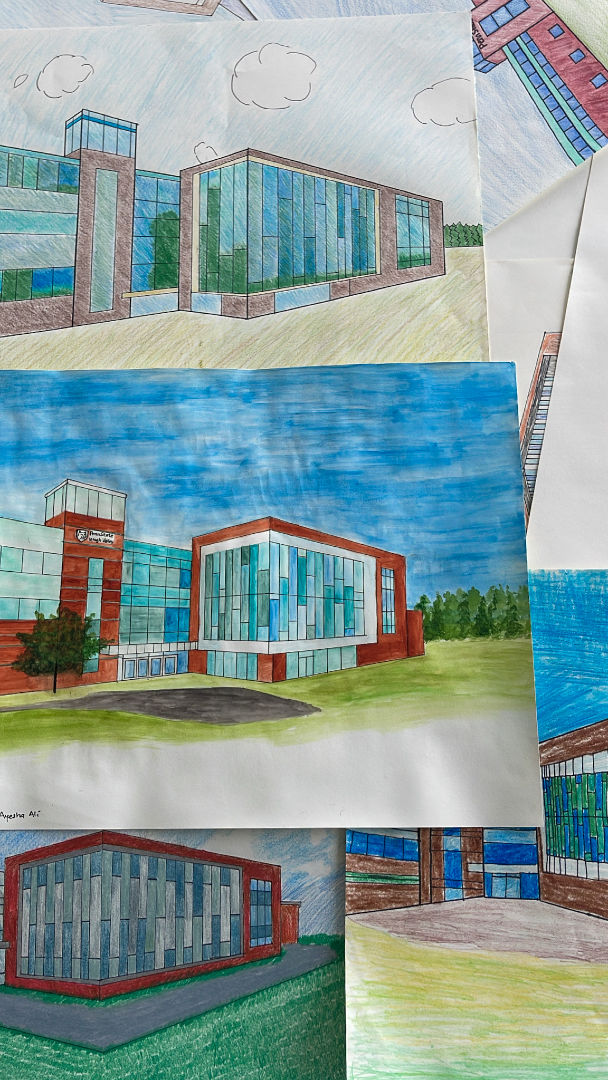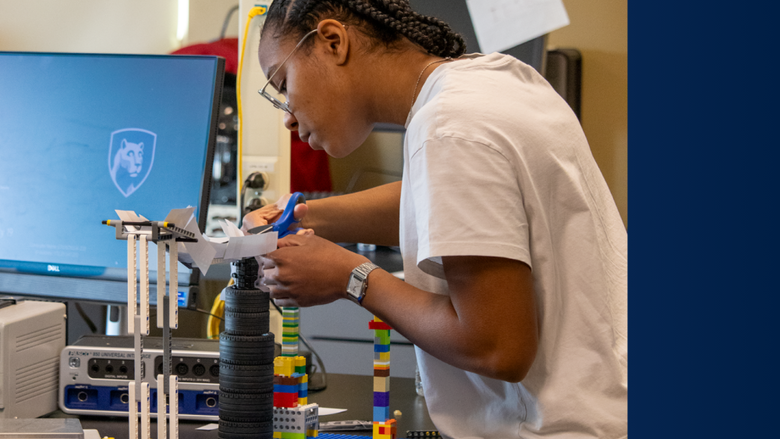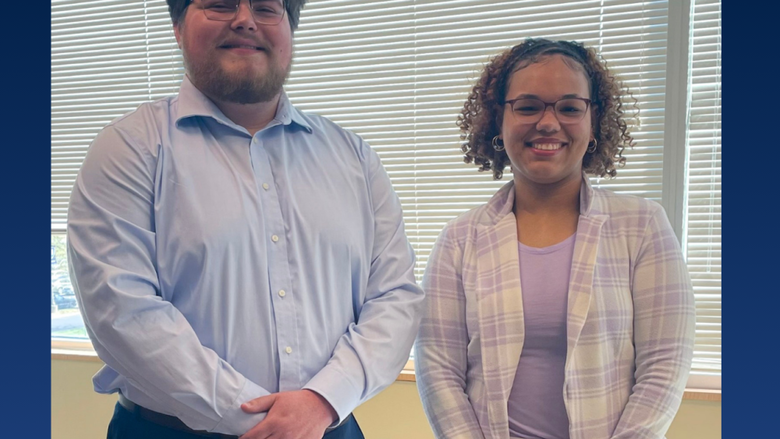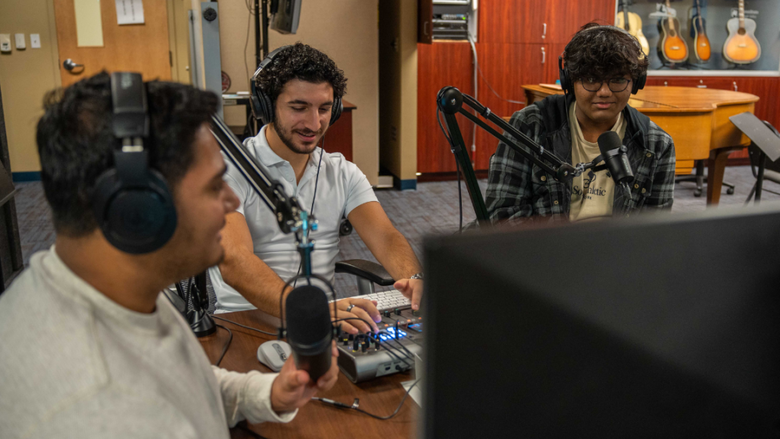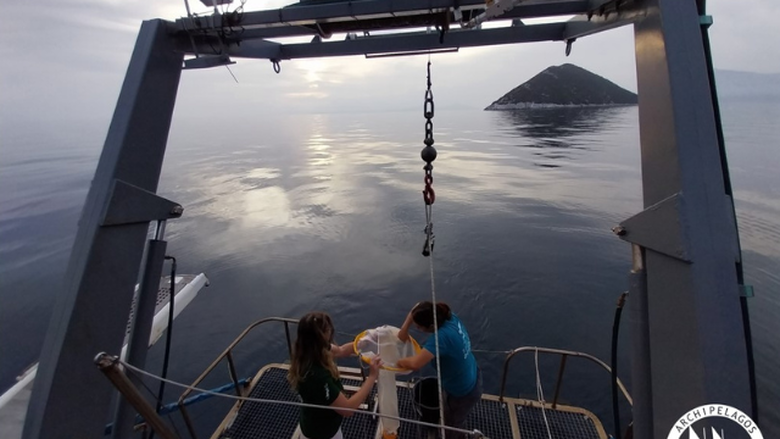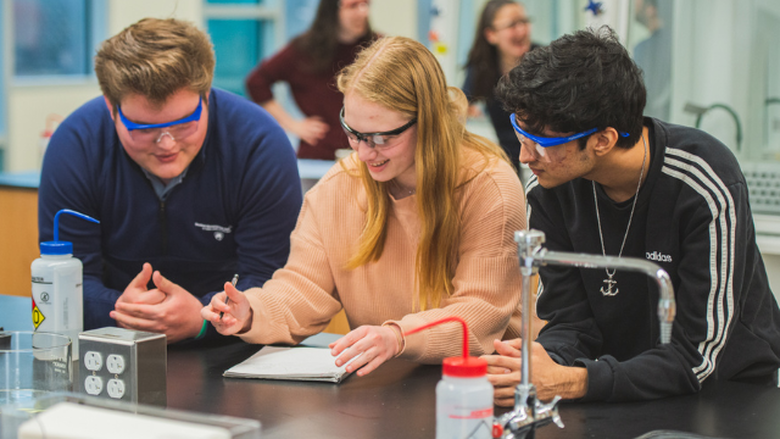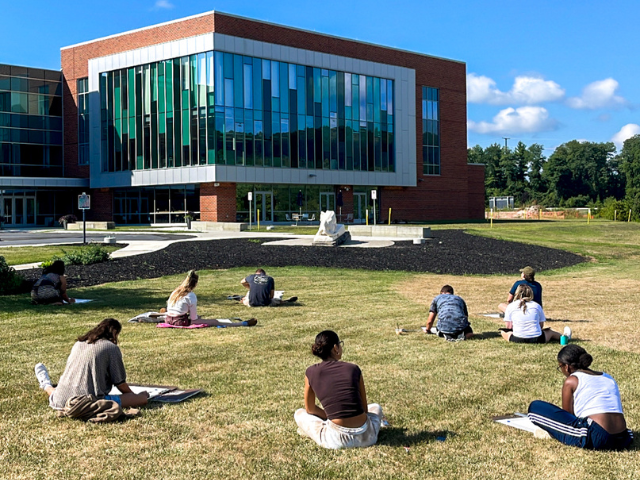
CENTER VALLEY, Pa. — To most, art and math seem like two ends of the spectrum: the left brain firmly in practical applications, the right etched in endless creativity.
Or are they?
Two Penn State Lehigh Valley professors came together this summer to connect these seemingly divergent disciplines, using the intersection to illustrate that art and math have more in common than what’s typically perceived.
Offered for the first time this fall, Art of Mathematics is the creation of Larry Musolino, assistant teaching professor of mathematics, and Ann Lalik, gallery director, arts coordinator, and lecturer in art. Musolino hatched the concept to counter negative perceptions of mathematics and ease the angst he’d sometimes see in his students.
“Math is a language that can explain the world around us, so I wanted to develop a course that would use things like nature, art, dance, architecture, music, etc. to emphasize the relevance and applications of mathematics,” Musolino said.
When Penn State Lehigh Valley put out a call for new interdomain courses, he approached Lalik to help bring their worlds together — in an uncomplicated way.
“Over the summer, we developed the Art of Mathematics to help students think about the two subjects as one. We made a point to integrate hands-on projects that make use of the resources readily available in our Art Studio on campus,” said Musolino.
Before long, the course had a waiting list.
“I love co-teaching and the pitching back and forth,” said Lalik. “Larry had ideas about architecture and other math concepts when he started the process but was open to my ideas — like using metalworking and a crochet project to create a hyperbolic plane. He was always supportive.”
For the first unit, the group took sketch pads out on the campus lawn and used math concepts to create drawings of the newly expanded Lehigh Valley campus. “It was a lesson on symmetry and perspective,” said Musolino. “And it looked awesome!”
The course also includes topics like tiling and tessellations, the Fibonacci sequence, the golden ratio (a geometric shape that frequently shows up in nature and is often used by artists and architects), and fractals. Students will experiment with different art forms, including crocheting and metalsmithing. Musolino said they are also hoping to visit a few art museums (perhaps virtually) and ask students to discuss the mathematical concepts they observe in the artwork.
Lalik said the course has been rewarding for both the students and instructors. “It’s really interesting to see things from two perspectives. This course allows our students to experience the rich elements of the of art — while looking at math, hopefully, through a new lens.”
